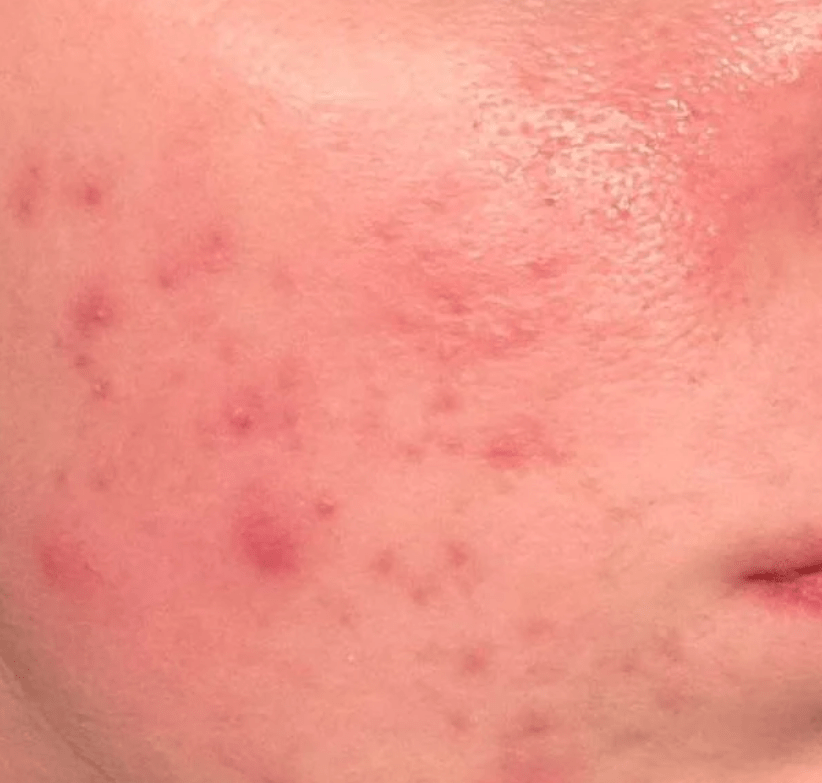
OUMERE Laboratory Report: Prolonged retinol use can be a significant driver of barrier fragility
- Short-term retinoids can help acne. Long-term “anti-aging” use can drive barrier fragility, sensitivity, and chronic irritation (Fisher & Voorhees, 1996).
- Increased UV reactivity has been reported with topical retinoids (Baden & Pathak, 1980).
- Better options for sensitive/barrier-compromised skin: controlled PHA turnover, anti-inflammatory protection, and lipid restoration.
- OUMERE’s system pursues equilibrium — results without perpetual irritation.
Cutting through the noise
Retinol is widely marketed as an anti-aging essential. In practice, prolonged use can be a significant driver of barrier fragility — dryness, redness, sensitivity — especially in already reactive skin. Evidence links retinoids to cohesion changes and higher transepidermal water loss (TEWL) in some contexts (Fisher & Voorhees, 1996; Elias & Feingold, 2001). Our position: sustainable youth correlates with homeostasis — intact lipids, controlled turnover, and low basal inflammation.
9 problems with long-term retinol
1) Skin barrier disruption
Mechanism: Accelerated turnover may thin the stratum corneum and alter corneocyte cohesion, increasing TEWL (Fisher & Voorhees, 1996; Elias & Feingold, 2001).
2) Photosensitivity and sun damage potential
Topical retinoids have been associated with increased UV reactivity; strict photoprotection is essential if used (Baden & Pathak, 1980).
3) Irritation and inflammation
Redness, peeling, burning occur in many users; chronic inflammation can degrade collagen (Mukherjee et al., 2006).
4) Short-term epidermal thinning
Even if dermal collagen may increase in some studies, rapid exfoliation can leave the epidermis more reactive (Elias & Feingold, 2001).
5) Systemic context (low but relevant)
Oral retinoids clearly affect liver/lipids; long-horizon topical systemic effects are less studied — caution in chronic paradigms (Niemann & Watt, 2002).
6) Developmental considerations
Synthetic retinoids are teratogens; avoidance is standard in pregnancy/trying to conceive (Niemann & Watt, 2002).
7) Dependence and rebound
Users often report rebound dryness/acne after discontinuation — a sign of disrupted homeostasis (Dermatol Clin, 2006 overview).
8) Market overuse & misuse
Retinol is often marketed as broadly suitable, including to sensitive skin, despite irritation-prone profiles.
9) Viable alternatives exist
Non-retinoid strategies (peptides, antioxidants) and controlled PHA exfoliation deliver texture/clarity with fewer setbacks for many users.
Under clinician guidance, prescription retinoids can be effective for acne and selected photoaging protocols when paired with rigorous photoprotection and barrier support. For sensitive or barrier-impaired skin, non-retinoid strategies (PHA turnover, anti-inflammatory care, lipid balance) often achieve comparable texture goals with less irritation.
Myth vs. Biology
| Marketing Claim | Biological Reality |
|---|---|
| “Retinol is the anti-aging gold standard.” | For many users, chronic irritation + UV reactivity can accelerate visible aging via barrier damage and collagen loss (Baden & Pathak, 1980; Elias & Feingold, 2001). |
| “Peeling = progress.” | Peeling is inflammation; youthful skin correlates with an intact barrier and controlled turnover. |
| “Everyone should use it indefinitely.” | Biology varies; sensitive/compromised skin often fares better with PHA-based, anti-inflammatory regimens. |
| “You can’t mimic retinol results.” | Peptides, antioxidants, lipid biophysics, and PHA turnover can deliver clarity and smoothness without dependency. |
How to get off retinol to heal damaged skin
Step 1: Stop the retinoid. Expect weeks to months of recalibration; full normalization depends on duration and intensity of prior use.
- AM (daily): No. 9 (diluted if sensitized) → UV-R → optional Serum Bioluminelle.
- PM (daily): Oil Dissolution Theory → UV-R → Serum Bioluminelle.
- Environment: Avoid strong acids, alkaline cleansers, scrubs/devices; maintain sun-avoidance habits.
- Not for: Active dermatitis, open wounds, current isotretinoin therapy, pregnancy/trying to conceive (consult your clinician).
OUMERE products for retinol recovery

No. 9 — Controlled Exfoliation (PHA)
Smooths texture with minimal irritation; supports orderly desquamation.

UV-R — Anti-inflammatory Cellular Repair
Calms redness; helps defend collagen from immune-mediated breakdown.

Serum Bioluminelle — Lipid Balance
Rebuilds barrier lipids; locks in hydration and resilience.

Oil Dissolution Theory — Non-stripping Cleanse
Lipid-compatible cleansing that preserves microbiome and barrier.
Further Reading & Research
- Barrier Repair After Retinoid/Acid Damage
- Fine Lines & Collagen Loss
- Sensitive Skin: The Cellular Response
- UV-R: Anti-inflammatory Cellular Repair
- No. 9: Controlled Exfoliation (PHA)
- Serum Bioluminelle: Lipid Balance & Support
- The OUMERE Routine
- The Science of Anti-Aging
- Research & Methods
- Ingredients A–Z
References
- Baden, H. P., & Pathak, M. A. (1980). Retinoids and UV sensitivity. Photodermatol Photoimmunol Photomed.
- Elias, P. M., & Feingold, K. R. (2001). Epidermal/dermal changes associated with retinoids. Exp Dermatol.
- Fisher, G. J., & Voorhees, J. J. (1996). Keratinocyte cohesion & barrier effects of retinoids. J Invest Dermatol.
- Mukherjee, S., et al. (2006). Retinoid-induced dermatitis and sensitivities. Dermatol Clin.
- Niemann, C., & Watt, F. M. (2002). Systemic/teratogenic risks of retinoids. Toxicol Appl Pharmacol.
Scientific disclaimer: Educational content only; not medical advice. If you use prescription retinoids, are pregnant or trying to conceive, or have active dermatologic disease, consult your clinician before starting, stopping, or substituting products.
Editor’s Lab Note
A note from the OUMERE Laboratory
Durable skin youth relies on homeostasis: intact barrier lipids, controlled turnover, and low basal inflammation. Chronic retinoid irritation may increase TEWL, destabilize keratinocyte cohesion, and heighten UV reactivity. OUMERE’s approach swaps dependency for equilibrium via PHA turnover (No. 9), anti-inflammatory signaling (UV-R), and lipid biophysics (Serum Bioluminelle) with non-stripping cleansing (Oil Dissolution Theory).
Cosmetic and educational content. Not medical advice.


